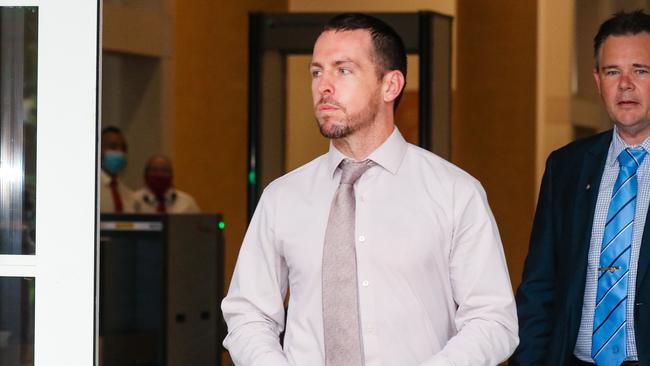Rolfe put himself at risk: expert
Two police officers put themselves in danger by rushing into a dimly-lit house to confront a high risk offender, court told.

Zachary Rolfe and his Northern Territory Police partner put themselves at risk by rushing into a dimly-lit home to confront “high-risk” offender Kumanjayi Walker when they had “all the time in the world” to prepare to tackle him safely, a court has heard in expert evidence.
The two young officers were in the outback community of Yuendumu to support local staff and help arrest Walker, a troubled Aboriginal teenager wanted for breaching a court order and for threatening two policemen with an axe three days prior.
Constable Rolfe shot Walker three times within minutes of their first encounter. Defence lawyers in Constable Rolfe’s murder trial have argued he reacted to a surprise attack with scissors. But crown prosecutors are eager to persuade the jury Constable Rolfe placed himself in jeopardy by not following his training.
On Monday, the NT Supreme Court heard from Acting Superintendent Andrew Barram, a senior officer and martial arts expert who, over a 25-year career, has been involved in delivering police firearms and defensive tactics training and has provided guidance and reports on the appropriate use of force.
He told the jury: “It doesn’t appear they (Constable Rolfe and his partner) followed their training. The first thing immediately apparent when Mr Walker comes into view is that he’s got his hand in his pocket,” he said.
“If you’ve got someone that you even suspect may be armed, the first thing you’re going to want to do is see their hands … they could’ve done any number of things rather than going in there and putting themselves in proximity to him.”
The jury has heard Constable Rolfe and three colleagues were not following a plan drawn up by superiors to arrest Walker safely with the help of a dog handler. Instead, on the evening of Saturday November 9 (the night before the arrest was scheduled), they drove around Yuendumu “gathering intelligence”, seeking to arrest Walker independently.
Crown prosecutor Philip Strickland SC played Acting Superintendent Barram body-worn video footage of Rolfe and his partner searching the house where the axe incident took place. Acting Superintendent Barram noted Rolfe disengaged the retention device on his pistol, which “showed there’s a readiness to use the firearm”.
“If you’re then going to do a search of the house like that, you would certainly consider getting the child out of the house … bullets can go through walls, doors, et cetera,” Acting Superintendent Barram said.
Defence Barrister David Edwardson QC has suggested Constable Rolfe had no option but to use his gun because he was close to Walker when Walker stabbed him with scissors.
Acting Superintendent Barram argued Constable Rolfe had put himself there by choice. “There’s no tactical … distance between them, limited time to be able to react. (It) completely goes against our training,” he said.
“They’ve put themselves in close proximity to someone that they suspect was armed.”
Constable Rolfe shot Walker once while he was standing and twice more while he was “pinned” to the ground.
Constable Rolfe is facing charges of murder, manslaughter and engaging in a violent act causing death, to which he has pleaded not guilty.
The trial continues.



